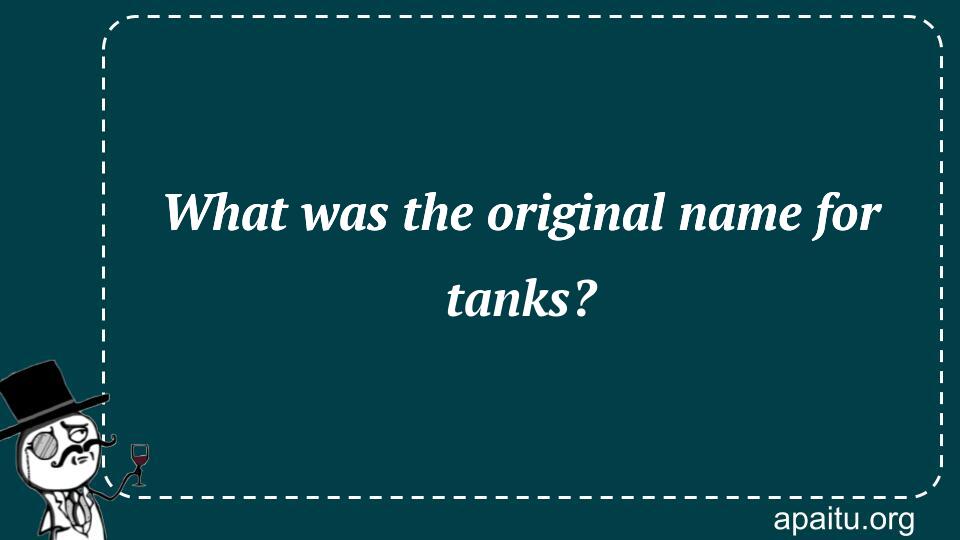Question
Here is the question : WHAT WAS THE ORIGINAL NAME FOR TANKS?
Option
Here is the option for the question :
- Mobile forts
- Gun runs
- Missile carts
- Landships
The Answer:
And, the answer for the the question is :
Explanation:
Early in 1915, Winston Churchill, who was then known as the First Lord of the Admiralty, created the Landships Committee. The objective was to build combat vessels with modern armor and combustion engine technology. The project, which advertised as research on new water tanks, was shrouded in secret, hence the name “tank.”

The origins of military tanks, those formidable armored vehicles that have become synonymous with modern warfare, can be traced back to an intriguing piece of history. Surprisingly, the original name for tanks was “landships.” Today, we delve into the fascinating story behind the development of these armored behemoths and explore how they came to be known as tanks.
The concept of landships emerged during World War I, a conflict that witnessed the rapid evolution of military technology and tactics. As the war unfolded, it became apparent that the stalemate of trench warfare demanded a new approach to break the impasse. The British military, in particular, recognized the need for a revolutionary weapon that could traverse the treacherous terrain of the Western Front, overcome obstacles, and provide firepower support to the infantry.
In order to maintain secrecy and mislead the enemy, the British decided to disguise these innovative machines as water carriers or “tanks.” The name “tank” was chosen to imply that these vehicles were simply large containers for transporting water to the troops. By using this deceptive terminology, the true nature of these armored vehicles was concealed from prying eyes and enemy spies.
However, the original name given to these vehicles within the British military was “landships.” This name was derived from the resemblance that these early tanks bore to naval warships. Just as warships sailed through the seas, these landships were envisioned to navigate the treacherous terrain of the battlefield. The name “landship” captured the idea of a large, armored vehicle that could plow through obstacles and deliver devastating firepower.
The first operational use of landships, or tanks, occurred during the Battle of the Somme in 1916. These early tanks, while relatively crude compared to their modern counterparts, proved to be a game-changer on the battlefield. They could traverse trenches, crush barbed wire, and provide cover for advancing infantry. Although they faced numerous mechanical challenges and were far from invincible, their presence had a psychological impact on both the enemy and Allied forces.
As the war progressed, the term “tank” gradually gained popularity and became the widely accepted name for these armored vehicles. The reasons for this shift in terminology are not entirely clear. Some speculate that the name “tank” stuck due to the need to maintain secrecy, while others suggest that it was simply easier to pronounce and remember. Regardless of the specific reasons, “tank” became the common name used by military personnel and civilians alike, and it has endured to this day.
The legacy of landships, now known as tanks, is undeniable. These armored vehicles have played pivotal roles in conflicts around the world, becoming symbols of military might, power, and technological advancement. Over the years, tanks have undergone significant advancements in design, mobility, firepower, and protective capabilities. They have become integral components of modern armies, capable of engaging enemy forces, providing armored support, and exerting control over the battlefield.
the original name for tanks was “landships.” Born out of the necessity to deceive the enemy and maintain secrecy during World War I, these armored vehicles were disguised as water carriers or tanks. However, the term “tank” gradually gained prominence and became the widely accepted name for these formidable machines. From their humble beginnings as landships to their evolution into the powerful tanks of today, these armored vehicles have left an indelible mark on the history of warfare.